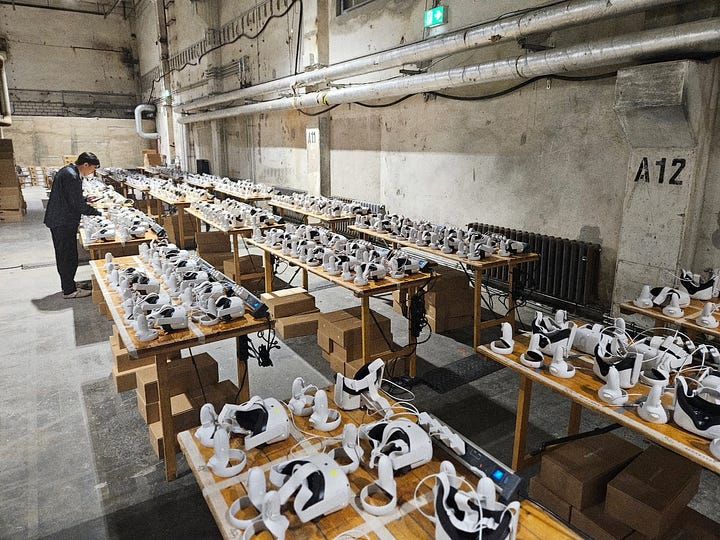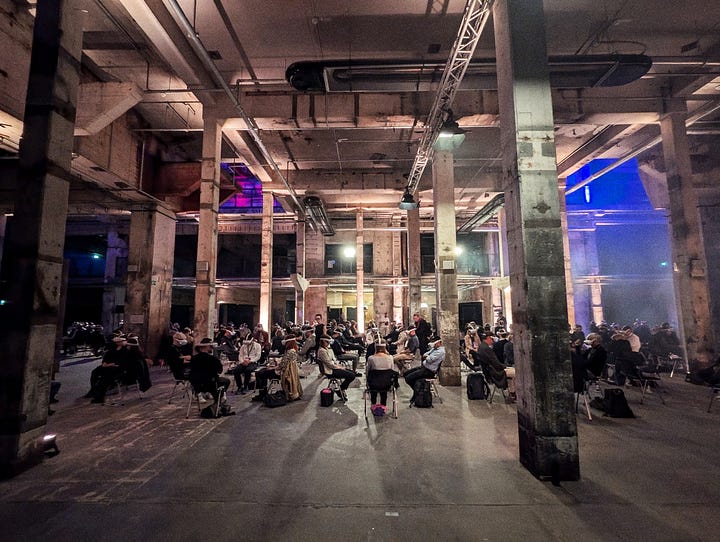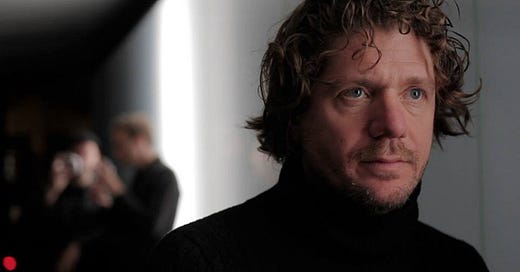Studies in Human Connection
Technology often gets the blame for making people feel isolated – but can it also help us feel more connected?
In an era of increasing digital isolation, social fragmentation and political polarization, Sean Rogg is seeking ways for people to connect in ways we’ve never experienced before. A visual artist and innovator with a passion for immersive experiences, he has spent over a decade experimenting with multi-sensory performances that challenge traditional boundaries between art forms. From molecular gastronomy to contemporary dance, from intimate performances with 40 participants to massive events involving 4,000 people, Rogg has consistently pushed the boundaries of human interaction within his ongoing art series “The Waldorf Project”. His work is about exploring human connection on a subliminal level – engineering empathy, exploring consciousness and creating altered states of reality.
Latest Cravings met Rogg for a conversation ahead of Virtual Serenity, dubbed the world’s largest location-based VR empathy experiment, arriving in Stockholm on April 26-27 and inviting 128 people on a deeply introspective VR journey.
How would you describe Virtual Serenity?
It's about exploring human connection. We're using technology to go straight to the mind, not just creating something entertaining, but exploring consciousness transformation, altered states of reality, and ultimately creating connection.
You’ve been exploring these themes for almost two decades – how did it all start?
The first chapter was a multi-sensory dining experience. In 2008, I was interested in immersive theater, molecular gastronomy and contemporary dance. I just took these things that interested me and smashed them together into an experience. Primarily, the big thing was contemporary dance, because I didn't want to have any menus or communication with words. We were voted by USA Today among the Top 10 experimental restaurants in the world, beating Noma. And I was only open five days!
What will the participants in Stockholm experience when they sit down with their VR headsets on?
I don’t want to give too much away, but first, you'll first see only yourself. Then, you'll see one other person, and go on a journey with that person. After that, you will see two other people in your family and partner with them, and eventually, everybody. But you'll never see people as actual people, only as emotional representations, so it’s totally anonymous.
What makes the Stockholm experience unique?
We have a rule book: no reading, no writing. Nobody says a word throughout the experience. It's all done through emotional storytelling, biohacking, and motion hacking. We use biometrics to understand how you're feeling – eye tracking, head tracking, pupilometry, gaze, heart rate variability. We can actually guide your experience based on your real-time emotional state. We can fantasize a place where we can take you and see whether you're going there during the experience.


Why do you feel that this project is important right now?
As adults in positions of power, we're fucking it up. Younger people are experiencing unhealthy technology addiction and loneliness. Anxiety levels are through the roof. Human connection is barely happening – everything is online. The irony is, I’m using technology to create human connection.
What's the ultimate goal of the experiment?
I want to see if I can have a connected audience. A few years from now, I see people all over the planet putting on headsets, coming into the same world, and having a global connection. It’s possible that something unexpected will happen. Something beautiful.
Virtual Serenity, Sergel Hub, Stockholm, 26-27 April. Tickets via Billetto.




